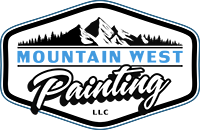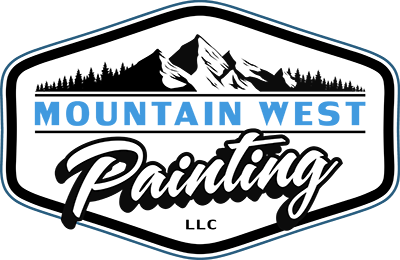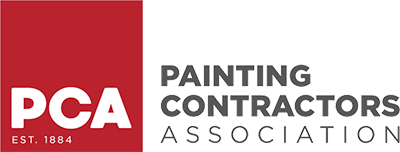It’s a common shortcut. One many homeowners take. But that decision, seemingly minor, often leads to expensive consequences.
Painting over mold doesn’t get rid of it. In fact, it makes things worse.
It isn’t just a stain—it’s a living organism. It continues to grow underneath paint, damaging surfaces, risking your health, and forcing you to repaint far sooner than expected. This blog will walk you through why it shows up, what happens when it’s ignored, and the right way to handle it—so you’re not redoing the same project a year from now.
Why Homeowners Skip Mold Removal

DCIM100MEDIADJI_0245.JPG
Not all problems are skipped out of neglect—sometimes it’s confusion, pressure, or lack of experience that leads to poor decisions.
Many homeowners misidentify mold. They think it’s just dirt, pollen, or aging paint. Others believe that a strong coat of paint will seal it in. Mold-resistant paints add to the misconception, even though they’re designed to prevent new mold—not kill existing growth.
Then there’s the time crunch. If you’re prepping a home for sale, on a deadline for contractors, or just squeezing a paint job into a packed schedule, it’s easy to push the prep aside. DIYers, especially first-timers, may not have the tools or know-how to address it properly—and when you’re budget-conscious, removing siding or hiring help might feel like overkill.
But here’s the truth: skipping removal isn’t just a paint issue. It’s a home maintenance problem with health and structural consequences.
What Mold Actually Does Beneath the Paint
It is persistent. And when it’s trapped beneath a layer of paint, the conditions only get better for it to grow. Dark? Check. Moist? Check. Covered and undisturbed? Perfect.
In those ideal conditions, it spreads behind the finish, feeding on wood fibers, drywall, or old caulk. And you won’t see the full damage until it’s too late.
Peeling paint, bubbling finishes, and flaking coatings are often the first visible signs that something is wrong. And by that point, theit has usually advanced. Sometimes it even eats into the wood, softening fascia boards and window trims from the inside out.
Let’s take a closer look:
| Symptom | What It Means |
|---|---|
| Bubbling or peeling paint | Moisture and mold are trapped beneath |
| Black stains bleeding through | It is active and spreading |
| Soft or crumbly wood | Structural damage from long-term exposure |
It doesn’t stop at damage. Spores don’t stay behind the paint—they circulate through the air. This can lead to a range of health symptoms, especially for kids, the elderly, and anyone with asthma or allergies. Even a seemingly small patch can impact your family’s well-being.
The Hidden Costs
At first, it might seem like a minor surface issue. But when left untreated—especially if you paint over it—the costs pile up fast.
Let’s break it down:
| Shortcut Taken | Long-Term Consequence |
|---|---|
| Painting over mold | Repainting within months due to failure |
| Ignoring stained wood | Costly siding or fascia board replacement |
| DIY clean with bleach only | It returns stronger, spreads deeper |
Bleach, by the way, is a common DIY go-to. But it doesn’t kill it at the root—especially not on porous surfaces like wood. It can even make mold harder to remove later by spreading the spores.
Then there’s your home’s value. Visible stains—or signs that you tried to cover it up—can be a red flag for buyers. In some cases, mold remediation is required before a home sale can even proceed.
How to Spot Mold Before You Paint

It isn’t always obvious. It doesn’t always appear as fuzzy black spots. Sometimes it’s subtle—just a faint odor or uneven texture on the siding.
Here’s what to watch for:
-
Visual clues: Speckled black, green, or gray patches. Paint that peels back with discoloration underneath. Warped siding or cracked caulking.
-
Smell: A musty, damp odor, especially noticeable in shaded or moisture-prone areas.
-
High-risk areas: Around gutters, under eaves, behind shutters, and where vegetation touches the siding.
If you’re unsure whether it’s mold or just dirt, a simple test: spray white vinegar on the area. If the patch lightens or changes color, there’s a good chance it’s mold.
The Right Way to Remove Mold (Before You Paint)
This is where prevention and process really matter. It doesn’t have to be complicated—but it does need to be done correctly.
Here’s a simple step-by-step list to follow before you paint:
-
Inspect the entire area. Look for signs of water intrusion, soft wood, or suspicious stains.
-
Clean using mold-killing solution. Use an EPA-registered cleaner—not bleach—and scrub with a soft brush.
-
Rinse and dry completely. Moisture is mold’s best friend. Allow 24–48 hours for drying.
-
Repair damaged materials. Replace rotten trim, cracked siding, or loose caulk.
-
Prime the surface. Use a mold-resistant primer designed for exterior use.
-
Repaint with quality exterior paint. Only after the surface is clean, dry, and repaired.
It’s worth noting that this process—done right—takes more than a weekend. But it ensures your paint lasts longer and your home stays protected.
Mold-Resistant Paint Is Not a Solution

DCIM100MEDIADJI_0094.JPG
Mold-resistant paints are helpful tools—but they’re not magic.
They’re formulated to slow the growth of new mold in clean, dry environments. That’s it. They don’t kill existing spores, remove stains, or fix moisture issues. If you paint over active ones, those spores will continue to grow beneath, eventually breaking through even the best coatings.
To get the full benefit of mold-resistant paint:
-
Use it only after proper cleaning and priming.
-
Apply in dry weather, with low humidity.
-
Maintain good exterior ventilation and drainage around the home.
These paints are best used as part of a full prevention system—not as a standalone fix.
When to Call a Professional
Not every problem can be tackled with a scrub brush and elbow grease. Sometimes, the job is too big, too risky, or just plain out of your comfort zone.
Call in a pro when:
-
It keeps coming back after cleaning
-
You notice wood rot, crumbling stucco, or soft siding
-
The area is hard to reach (second story, roofline, behind tight spaces)
-
You’re unsure what kind of mold it is—especially if you suspect black mold
Professionals bring experience, tools, and peace of mind. They can detect moisture problems you didn’t know were there, contain it safely, and use commercial-grade products that won’t damage your exterior. Many also offer guarantees or warranties that protect your investment.
Don’t Paint Over the Problem
Painting over mold might seem like a quick win—but it’s a guaranteed loss in the long run. It damages surfaces, weakens paint jobs, and creates an unhealthy home environment. And once it spreads behind your paint, fixing it gets more expensive and complicated.
Your home deserves better. So does your family.
If you spot it—or even suspect it—pause your painting project. Deal with the root issue first. The results will look better, last longer, and cost less over time.
And if you’re not sure where to start or just want the job done right, call our pros. We offer free inspections, honest advice, and mold-resistant painting from start to finish.
Your home is worth protecting—and it starts beneath the paint.




